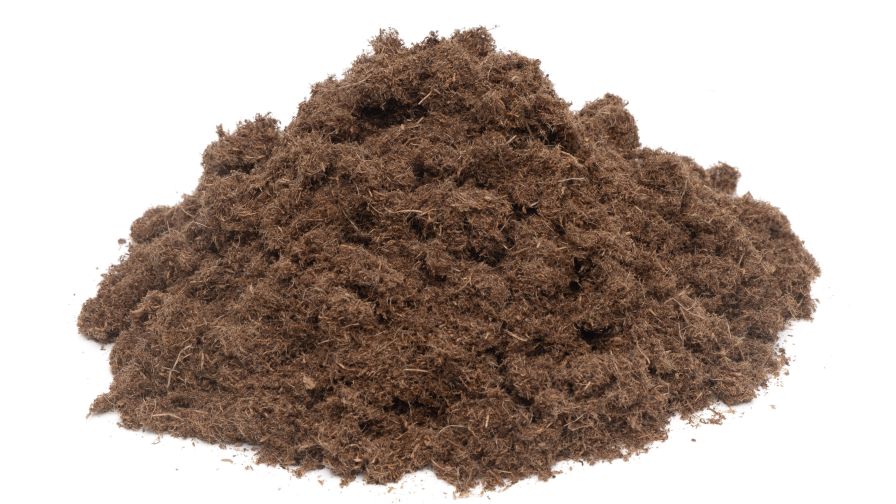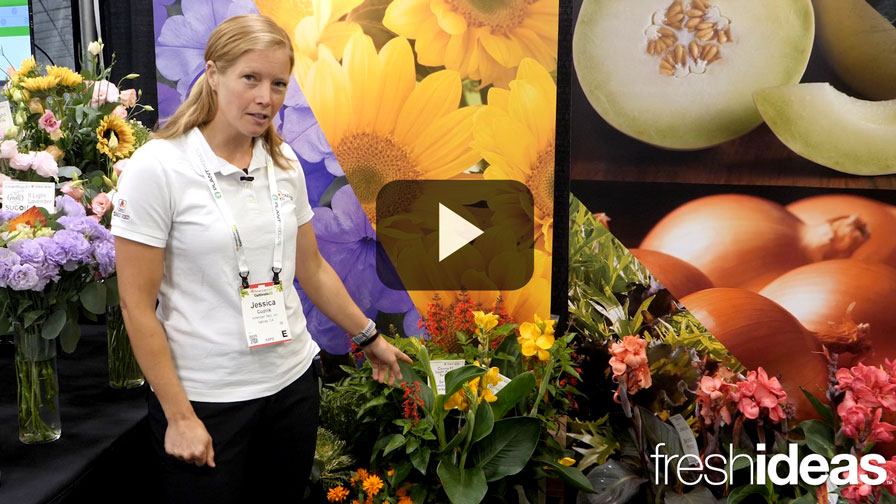A Supplier Perspective on How the Growing Media Market Is Evolving

HydraFiber Specialty Short Fiber is an engineered substrate component that makes for ideal propagation, filling smaller cells more easily. Photo: Profile Products
Greenhouse Grower’s March 2024 issue focused on how concerns over peat supplies are leading to new innovations, as well as best practices for being efficient in how you use peat (you can learn more here). Here, we go in depth with Jeff Langner, Brand Manager at Profile Products, to learn more about market conditions and how growers of all sizes can improve their production practices.
Brian Sparks: Let’s start with the current state of the peat market and what you’re seeing in terms of current and future supplies of peat.
Jeff Langner: I think the perceptions that are out there are often formed from reality. There’s no doubt that the last few years have been difficult from a harvest standpoint. When we talk about sustainability and cultural practices, it’s important to segment between Canadian peat and European peat. Canadian peat, which so many North American growers rely on, has been more challenged in providing a reliable supply. Most of that has been weather driven. The peak years of horticulture growth coming out of COVID some pressures on supply from a transportation standpoint, and having the manpower to harvest. I think those concerns have subsided. We still see pressure on international shipping, and that extends into things like coir just as much as it does with peat coming over from European bogs. I think harvesting has maybe dissipated a little bit or equaled out a little bit, and now weather has become the primary factor.
We continue to try to make sure that we are harvesting in sustainable ways, and that limits to a degree how much you can produce in a year. And I know other producers are in that same boat of trying to be good stewards of the environment and trying to manage peat as a resource. You want to be sensitive to how much land you open up in a given year.
Brian Sparks: For growers who rely on peat as their best option right now, are there any best practices that you can offer to make the most efficient use of their peat?
Jeff Langner: The first is probably the most obvious, but just planning ahead. Part of what we’ve seen is a shift, and a lot of it is driven at the retail level, in which inventories have been cut down. We’re moving more toward just-in-time inventory. If growers are seeing that on live goods shipments, they’re also trying to then respond to that in terms of managing their raw materials, their substrates in particular, and their own inventories. With a material like peat, the better planning and forecasting you can put in place, and the earlier that people can commit to orders of peat, the better they’re going to be.
It also really comes down to cultural practices and how growers build out their substrates. That starts with what alternatives are out there that can help reduce the amount of peat that they’re reliant on. That’s where I think you’ve really seen the benefit of wood fiber substrates, engineered fibers, however, you want to describe them. What we’re trying to offer a grower is consistency with a material that can be readily made all year in a controlled environment. It’s also a renewable resource in that we’re using a waste product that we’re introducing back into the stream. Reducing a dependence on peat by increasing a reliance on something that is more readily available and more sustainable helps growers control their inventories and manage their processer, so they’re not reliant on what the weather was in Canada this week. I have to believe you’re going to see more and more of a shift to materials like that over time.
Brian Sparks: How are you working both large and smaller growers today?
Jeff Langner: We know that for a grower to be successful with a highly compressed material, they have to have some equipment. You have to have some way to handle that material. Large growers are certainly better equipped to install machinery to manage the fibers. As we work with some smaller growers, it becomes a little bit more of a challenge for them to make that kind of commitment or investment. So what we are striving to do is partner with more soil blenders and make mixes that have some component of engineered fiber, whether it’s with a peat, a bark, or a coir. It’s about making sure that engineered fibers are just part of a standard practice for soil blenders. These companies won’t necessarily be apt to do that until the demand comes from the growers. So our focus is on grower education and focusing on that next wave of growers to make sure they understand the cultural benefits of having an engineered fiber.
Brian Sparks: How does that grower education process work for you today?
Jeff Langner: I still think very highly of opportunities in the industry to conduct webinars. I think that’s probably one of the more effective ways to get your message out and to engage with growers. We also certainly take advantage of educational sessions at various conferences like Cultivate, and some of the regional conferences as well. Any chance we have to educate and show pros and cons of different substrates in a non-promotional way helps growers understand that the practices they’ve always followed can perhaps be improved. That’s not to say that there bad practices. It’s more about, how can I improve my cultural practices? How can I improve my substrates, and at the same time cut down some of my reliance on raw materials that I’ve struggled to get these last few years?
Brian Sparks: What excites you the most about the future of this industry?
Jeff Langner: What I think speaks well to the security of the future of this industry is the passion that everybody brings to the table. None of our products matter if you don’t have a hungry consumer base, and I continue to see a passion for growing, gardening, and planting. I don’t see that going away, and I think the passion that we all have across this industry continues to fuel our collective success in the future. I’ve worked across a few different business segments at Profile Products, and I’ve worked across a couple of different industries in my life. Not every industry can say that. I think we have something unique, and there is a real spirit of collaboration. We all want to help this industry grow, and I think there’s a commitment to one another to making that happen, and that to me helps provide some security for the future.









